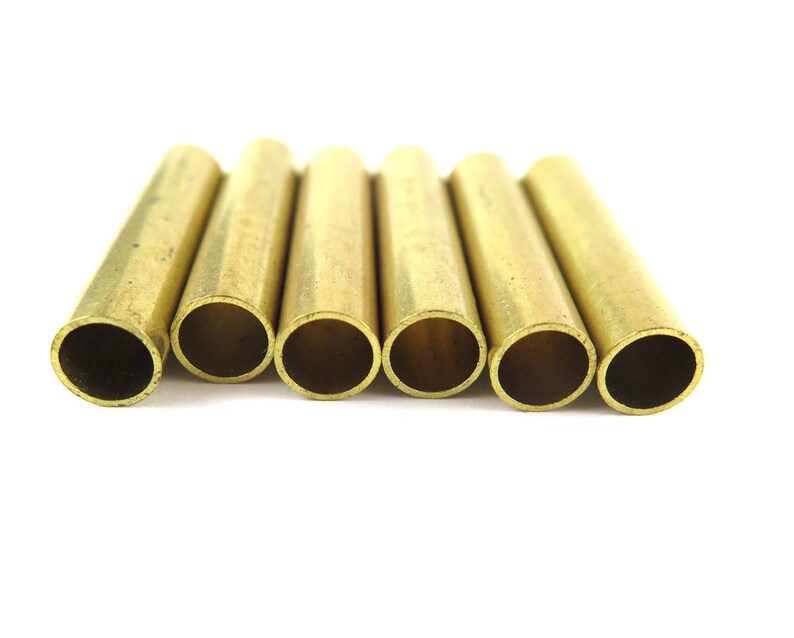There is a common misconception about its composition, particularly regarding whether admiralty brass contains copper-nickel as a significant component. In this article, we will delve into the true composition of admiralty brass, supported by references from reputable sources.

1. Different names for Admiralty brass.
2. What is admiralty brass?
3. What is Copper-Nickel Alloy?
4. Difference of Admiralty brass and Copper-Nickel Alloy.
5. Reference.
Different names for Admiralty brass.
Admiralty brass is also known by several other names, including:
1. Naval Brass: This name is derived from its extensive use in marine applications, where its corrosion resistance and durability make it a preferred choice for naval and marine equipment.
2. 70/30 Brass: Referring to its composition, this name highlights the alloy's 70% copper and 30% zinc content, which is the most common ratio used in admiralty brass.
3. C44300: Admiralty brass is also identified by its standardized UNS (Unified Numbering System) designation, which is C44300. This designation helps in specifying and identifying the alloy in various industries.
4. CuZn28Sn1As (CW706R): In certain European and international standards, admiralty brass is designated as CuZn28Sn1As, with CW706R being the corresponding EN (European Norm) designation.
5.
Beta Brass: Admiralty brass is sometimes referred to as beta brass due to its higher zinc content compared to alpha brass alloys.
What is admiralty brass?
Admiralty brass is predominantly a copper-based alloy, consisting of copper (Cu) and zinc (Zn) as its principal components. It is highly regarded for its corrosion resistance, malleability, and excellent thermal conductivity, rendering it a preferred material for various engineering and marine applications. For further infomations, you can refer to this article to delve deeper into the subject.
What is Admiralty Brass?Copper-nickel alloy is a metallic composite that primarily consists of copper as the base metal and nickel as the primary alloying element. The alloy's composition may vary to create different copper-nickel alloys, each possessing distinct properties and applications.
Copper-nickel alloys are well-known for their exceptional resistance to corrosion, particularly in marine environments. They are extensively used in shipbuilding, offshore structures, seawater piping systems, and other marine applications due to their ability to withstand harsh seawater conditions. The 90-10 and 70-30 copper-nickel alloys are among the most commonly used compositions in marine applications.
The versatile properties of copper-nickel alloys have garnered significant attention from researchers. Studies like "Corrosion Behavior of Copper-Nickel Alloys in Seawater" (Xu, Li, & Yang, Materials Performance and Characterization, 2019) explore the corrosion resistance of copper-nickel alloys in marine environments. Additionally, research such as "Copper-Nickel Alloys for Marine Environments" (Weiss, CORROSION, 2003) delves into the suitability of copper-nickel alloys in marine settings.
Difference of Admiralty brass and Copper-Nickel Alloy
1. Composition:
Admiralty brass, primarily composed of copper (Cu) and zinc (Zn), with small trace amounts of iron and lead, typically contains 71% to 74% copper and 23% to 28% zinc.
On the contrary, copper-nickel alloy stands as a distinctive metallic composite, with copper as the base metal and nickel (Ni) as the primary alloying element. The most common compositions include the 90-10 alloy (90% copper, 10% nickel) and the 70-30 alloy (70% copper, 30% nickel).
These alloys offer unique attributes, with admiralty brass showcasing commendable corrosion resistance and being widely employed in various industrial and marine applications. In contrast, copper-nickel alloys are renowned for their exceptional resistance to corrosion, especially in marine environments, making them prevalent in marine equipment, shipbuilding, and seawater piping systems.
When selecting between admiralty brass and copper-nickel alloy, the specific requirements of the intended application, such as corrosion resistance, electrical and thermal conductivity, and mechanical properties, should be taken into careful consideration.
2. Corrosion Resistance:
Admiralty brass demonstrates commendable corrosion resistance in different environments, yet it falls short compared to copper-nickel alloys when exposed to seawater, where the latter showcases remarkable resistance to corrosion, especially in marine settings.
3. Applications:
Admiralty brass finds frequent application in heat exchanger tubes, condenser tubes, water tanks, marine components, and industrial equipment. On the other hand, copper-nickel alloys are extensively utilized in marine equipment, shipbuilding, offshore structures, seawater piping systems, electrical components, and heat exchangers.
4. Conductivity:
Admiralty brass boasts good electrical conductivity, although it does not reach the high levels found in copper-nickel alloys. In contrast, copper-nickel alloys demonstrate outstanding electrical and thermal conductivity, making them invaluable in various electrical and heat transfer applications.
In conclusion, while admiralty brass shares some electrical conductivity with copper-nickel alloys, it is essential to note that it is not the same composition. Admiralty brass is primarily a copper-zinc alloy with unique properties that make it suitable for multiple industrial and marine purposes. On the other hand, copper-nickel alloys have their distinct compositions, featuring copper as the base metal and nickel as the primary alloying element, with a specific range of applications.
References:
1. Xu, X., Li, L., & Yang, C. (2019). Corrosion Behavior of Copper-Nickel Alloys in Seawater. Materials Performance and Characterization, 8(5), 667-681.
2. Weiss, W. (2003). Copper-Nickel Alloys for Marine Environments. CORROSION, 59(12), 1077-1089.

 Nitinol Wire/Shape Memory Alloy: An Innovative Journey of Wonders
Nitinol Wire/Shape Memory Alloy: An Innovative Journey of Wonders
 What are the disadvantages of nitinol?
What are the disadvantages of nitinol?
 How to shape nitinol wire: A Comprehensive Guide
How to shape nitinol wire: A Comprehensive Guide